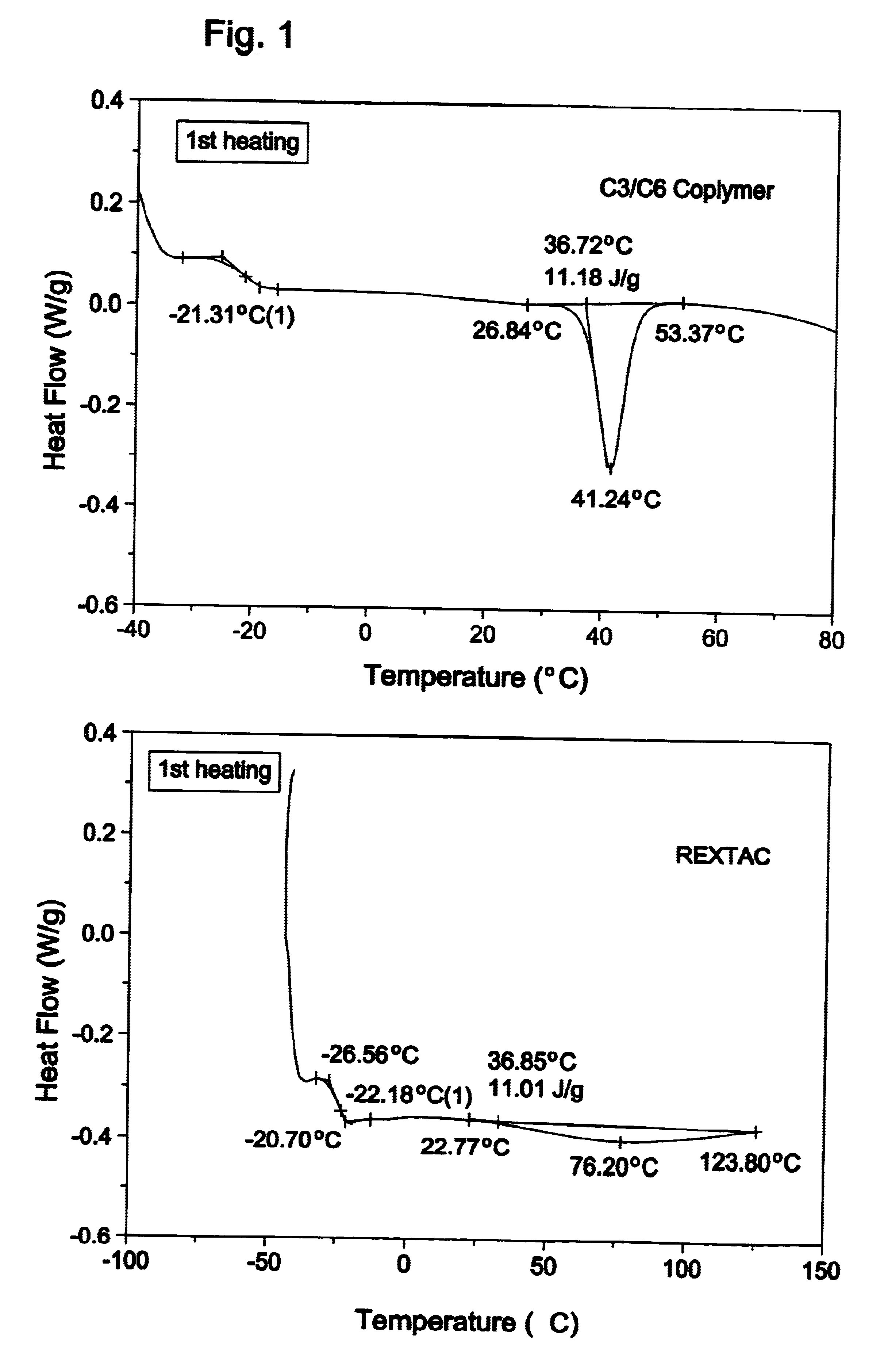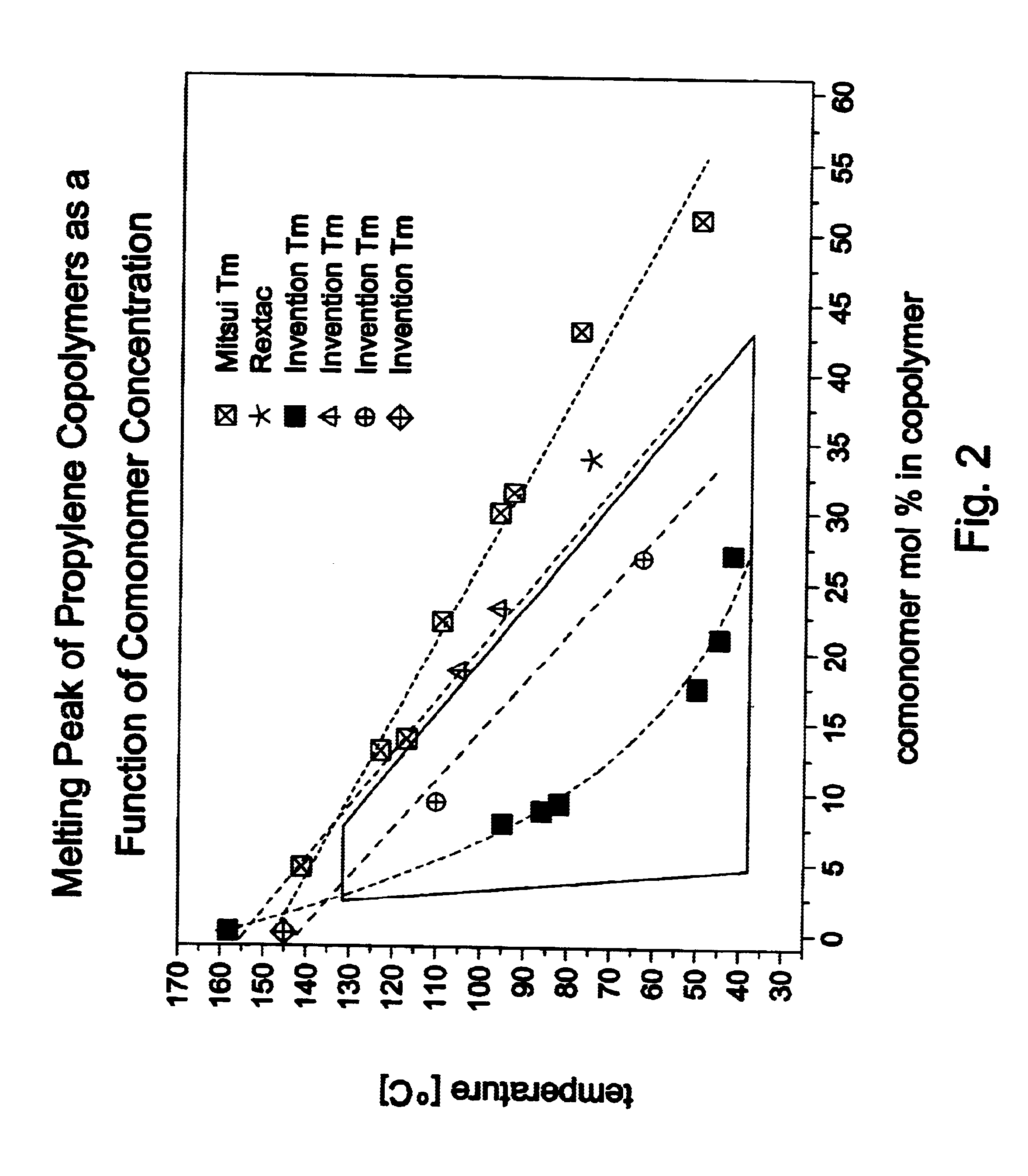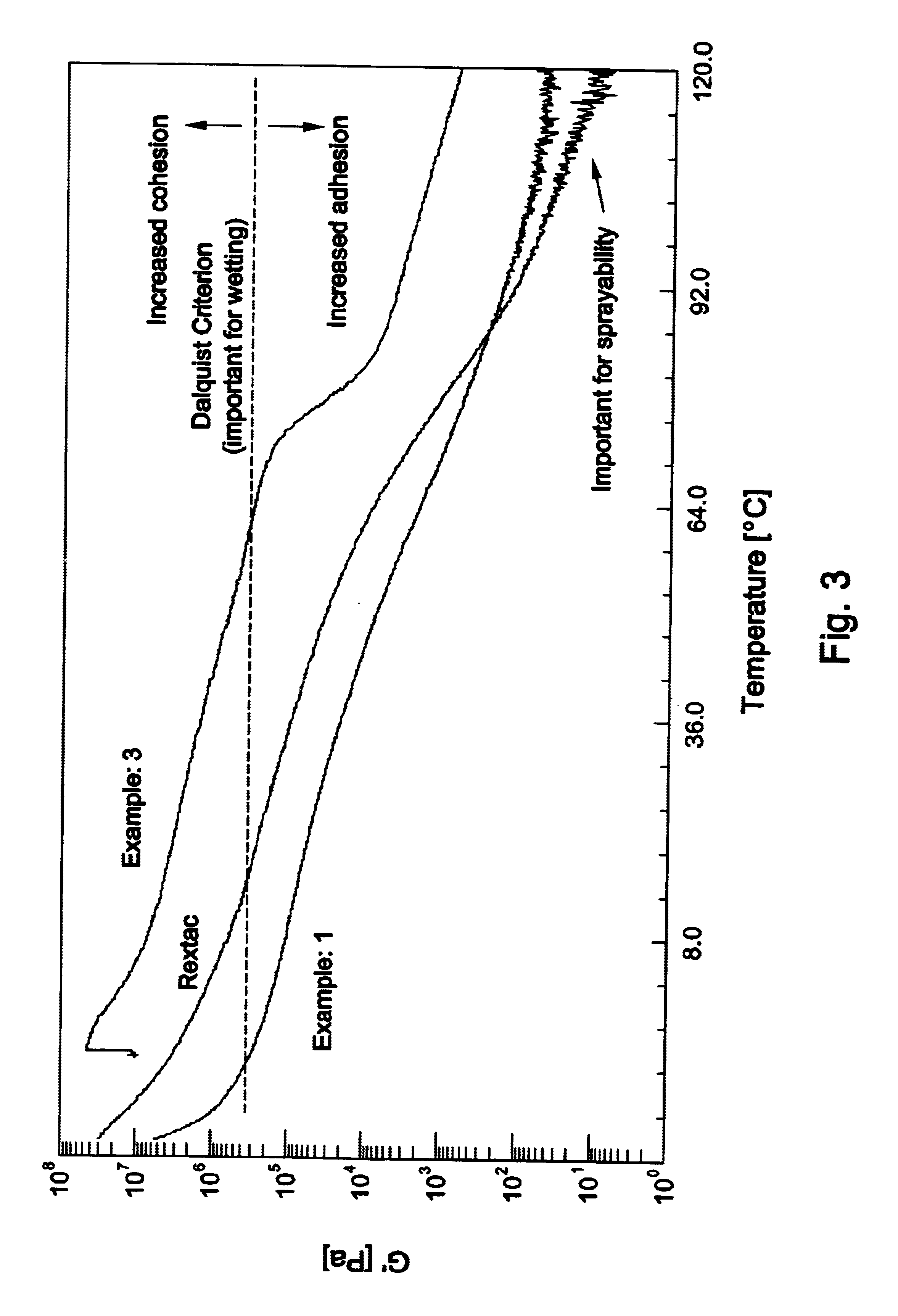Adhesive alpha-olefin inter-polymers
a technology of alpha-olefin and polymer, applied in the direction of adhesives, wax adhesives, etc., can solve the problems of polymer and its application in the adhesive end use, low cohesive strength, restricting application and adhesive performance, etc., to reduce or eliminate the need to blend the polymer, low elastic modulus, and high deformation
- Summary
- Abstract
- Description
- Claims
- Application Information
AI Technical Summary
Benefits of technology
Problems solved by technology
Method used
Image
Examples
example 1
300 ml of prepurified and degassed hexane was transferred into a stainless steel autoclave reactor with internal capacity of 1000 ml. The reactor had been maintained under slight positive argon atmosphere at all times. Consequently, 2 ml solution of 10% wt. methylaluminoxane in toluene, supplied by Aldrich, was transferred into the autoclave. 40 ml of prepurified hexene was added and the mixture was stirred until stable pressure was reached. The reactor was maintained at a pressure slightly above atmospheric. In succession, 50 g of prepurified propylene was added under stirring. The reactor mixture was heated to 90.degree. C. At this reactor temperature premixed 2 mg of dimethylsilyl-bis(2-methyl-4-phenylindenyl)zirconium dichloride (1 mg / 1 ml of toluene) and 2 ml solution of 10 wt. % methylaluminoxane in toluene were placed in the reactor. The polymerization was conducted for 30 minutes. The product which was soluble in hexane was precipitated twice in acidified isopropanol. Therea...
example 2
The polymerization was conducted in the same way as in Example 1 except that the supplied monomer proportions were changed. 73 g of product were obtained. From NMR data the composition was 74 mole % propylene and 26 mole % hexene. The DSC data showed Tm=43.degree. C., crystallinity 7% and Tg=-21.degree. C. The molecular weight information were obtained from GPC (Mw=99 k, Mn=44 k, Mz=160 k, Mw / Mn=2.24).
example 3
500 ml of purified and degassed toluene was transferred into a stainless steel autoclave reactor with internal capacity of 1000 ml. The reactor had been maintained under slightly positive N.sub.2 atmosphere at all times. Consequently, 1 ml solution of 10% wt. methylaluminoxane in toluene was transferred into the autoclave. Then, 40 ml of prepurified hexene was added and the mixture was stirred until a stable pressure was reached. The reactor was maintained at a positive pressure (i.e. slightly above atmospheric). In succession, 150 ml of prepurified liquid propylene was added under stirring. The reactor mixture was heated to 95.degree. C. At this reactor temperature premixed 0.5 mg of dimethylsilyl-bis(2-methyl-4-phenylindenyl)zirconium dichloride (1 mg / 1 ml of toluene) and 1 ml solution of 10 wt. % methylaluminoxane in toluene were placed in the reactor. The polymerization was conducted for 20 minutes. The product which was soluble in hexane was precipitated in slightly acidified i...
PUM
| Property | Measurement | Unit |
|---|---|---|
| mol % | aaaaa | aaaaa |
| mol % | aaaaa | aaaaa |
| mol % | aaaaa | aaaaa |
Abstract
Description
Claims
Application Information
 Login to View More
Login to View More - R&D
- Intellectual Property
- Life Sciences
- Materials
- Tech Scout
- Unparalleled Data Quality
- Higher Quality Content
- 60% Fewer Hallucinations
Browse by: Latest US Patents, China's latest patents, Technical Efficacy Thesaurus, Application Domain, Technology Topic, Popular Technical Reports.
© 2025 PatSnap. All rights reserved.Legal|Privacy policy|Modern Slavery Act Transparency Statement|Sitemap|About US| Contact US: help@patsnap.com



